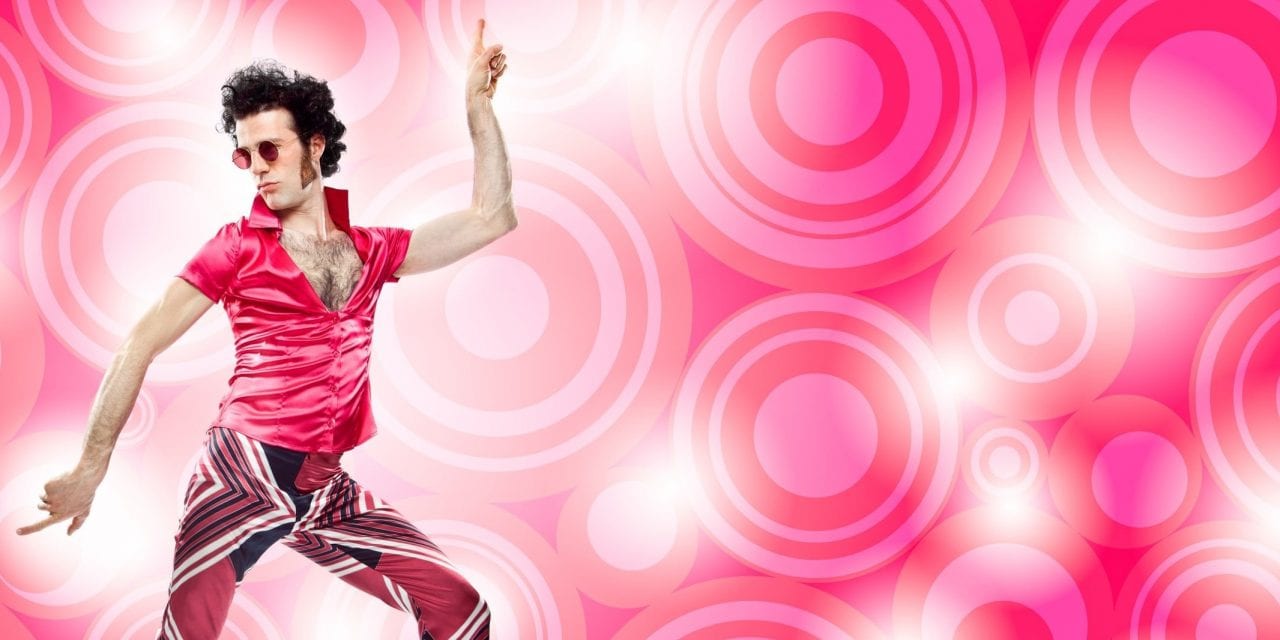A happy dance is part of my everyday routine.
Part 2 of the interview Senior Housing Forum Publisher and Podcast Co-Host Steve Moran conducted with Ingrid Fetell Lee, researcher and author of Joyful: The Surprising Power of Ordinary Things to Create Extraordinary Happiness. [If you missed Part 1, read HERE.]
What an Expert on Joy Wants from Senior Living
STEVE: So I want you to if you . . . this is going to be a really hard exercise for you because you’re obviously very, very young, but imagine that you’re now 80 years old and you’re living in senior living, in a congregate setting. What’s going to bring you joy every day? What’s going to make you excited about waking up because you got this joyous day all day long?
INGRID: Well, I think there are a couple of things. I think about it often in terms of making sure that we can give people the experience that . . . if you look at the arc of life, there are certain things that we don’t have much as children, we gain a lot in midlife, and then we start to lose as we get older. And so, for me, it’s about how do we create those feelings that maybe start to decline in older age.
For example, the feeling of freedom. You have so much freedom in your midlife and then that starts to decline. So how do we give that feeling of freedom back? And sensorially one of the things that gives us freedom back is nature, contact with nature, and exposure to nature. So, I think for me that’s the first thing that would be the most important is finding ways to bring small exposure to nature into every day.
I think the other thing is social interaction. I talk a lot in the book about how joy is contagious; we catch it from our neighbors. We catch it from those around us. So how do we actually make those points of communal interaction more joyous? One of the ways that we do that I think is bringing in things like music and dance.
I was really intrigued by research that shows that people actually sit closer together in a household when music is playing. So, there’s again things that happen in the background that changed the way that we act for the better and sort of increase our joy.
So those are things projecting forward when I think about what I want when I’m 80, I want to have an experience that feels . . . where I really feel free. Where I feel connected to other people. And then the last thing I would say is that I feel like I have a sense of play in my life. That I have opportunities to play and a sense of whimsy in everyday life.
Happy Dances and Other Expressions of Joy
STEVE: Well, so one of the things I just want to say here, we’re not going to get a demonstration, but in Ingrid’s bio she talks about how she’s got this whole repertoire of happy dances and I tried to get her to do one here on video, but we finally decided that probably wouldn’t work in this environment. I’m really disappointed about that.
INGRID: But I will say that a happy dance is part of my everyday routine. My husband and I do happy dances on Friday. We do happy dances to celebrate anything, you know. If I have a really great day at work, I’ll do one just by myself. That is, I think, a very simple, joyful building block for everyday life.
STEVE: Two questions? How do you make sure you stay focused on joyful things every day? I mean, I know it’s kind of your thing, so it’s probably easier.
INGRID: Yep.
STEVE: And then, if you’re running a senior community, how would you go about . . . because I just think focusing on it would be a huge thing . . . a huge star for us.
Bringing Joy to Senior Living: the Difference Between Joy and Happiness
INGRID: Yeah, so I think the first thing is to understand the difference between joy and happiness because I think that was a big shift in my life, to understand that happiness is a broad evaluation of how we feel about our lives over time. We measure it over time, whereas joy is much more about the immediate moment. This little burst of positive emotion. And I think that takes a lot of pressure off it, right?
We tried to think, how are we going to create happiness? It’s really hard. There are so many factors, it’s hard to know where to begin. If we think about, let’s just create more moments of joy every day, that’s really small. But those little moments, they really add up. The halo effects from those moments kind of spread out because it’s contagious, and because we sort of share it with others unconsciously through our facial expressions, our tone of voice, all these different ways that we share and spread emotion.
And so, focusing on joy for me, it’s much easier because it’s like, “okay, I just want to have a few more moments of joy today, how can I do that?” And that might be by wearing something joyful, by wearing a bright color when I wake up instead of putting on gray or the New Yorkers’ uniform black, right? It might be about planning something in my day to look forward to. So, making sure that I have something on the calendar that I’m excited about it, even if it’s just 15 minutes.
It might be by doing something that I call joy spotting, which is just opening your eyes to the joy around you. Just almost like a mindfulness exercise to go outside, look around and say, what in my surroundings, is joyful? What’s colorful, what’s round, what’s light, what is vibrant? And tuning into those things because I think that really helps bring your focus there.
STEVE: I really like that. I can imagine going into a senior living community and saying, “Let’s just spend a week thinking about things that bring us joy here. And, like I say, the virality of it on this group. You wouldn’t particularly know this about me, but I have more Chuck Taylor shoes than Imelda Marcos had shoes . . . in bright colors and that’s my standard work when I go to conferences. Even with a tuxedo, it’ll be some bright color or tie-dyed Chucks and it does . . . it brings joy. So, any research about the relationship between joy and happiness? I’m sort of curious about that.
Longevity, Productivity, Success, Behavior Change Enhanced by Joy
INGRID: Yeah, there is research that shows that the more of these little moments that we experience, the more it contributes to a lot of the things that make us happy, right? So, for example, little moments of joy help to decrease our body’s response, our cardiovascular response to stress. So, we do that again and again and again and slowly our stress responses become faster at resetting and then over time that protects our heart. And that may be one reason why joyfulness is associated in some studies with longevity.
So that’s one piece of it. Another is with habit change, behavior change. Research shows that when we have little joyful moments or when our habits are joyful, when we build joy into our behavior, the behaviors we’re trying to change, that we’re more likely to stick with them and we’re more likely to make longer term lifestyle changes.
There’s also research that connects joy and success. So, you know, research shows that were actually 12% more productive when we’re in a state of joy. So these little moments of joy, eventually we‘re healthier, more productive, we’re more connected to other people. We’ve been able to make positive lifestyle shifts and all of that happens and all of a sudden, we’re like, well, that’s what happiness is made of.
So, a lot of the things . . . we often, I think, sometimes think I have to be successful to be happy or I have to make these changes in my life to be happy, and, in fact, if we just start to focus on joy instead and infusing joy into all these different aspects of our life, the other stuff unlocks. And we don’t have to pursue it with such vigor.
And then, on the other hand, sometimes when we pursue happiness, we do things that sabotage our joy, right? We say, “Oh, I don’t have time to see friends. I better shift that to next weekend”, and then next weekend, to a time that never comes. Or “I don’t have time to work out, so I don’t feel good.” And, it’s really interesting to me how tuning back into the momentary joy, though it seems fleeting and trivial, actually is the unlock for happiness.
Unlock Happiness by Finding Joy 10 times A Day
STEVE: In every senior living community, there are a few residents who just hate it. They see the negative in everything. And I’m thinking if I, as part of the staff in the community, spent time just working with that person to help see their joy . . . We mostly think it’s impossible to fix, but maybe it’s fixable if we really said, “let’s find 10 times a day where we can help that person see a piece of joy”. It might completely unlock the brain. This is so cool.
INGRID: Yeah, it might, and I think . . . I never want to be too prescriptive and say that this is the answer to everything. I do think that for people who already feel joy, this can be . . . who already know how to feel joy, this can increase their resilience and make them . . . help buffer them for shocks that might come. Emotional shocks that might come down the road.
For people . . . I have seen people who say, “I just think I’m not one of those happy people” and “they’re happy people out there and I’m not one of them.” I have seen those people try this and say, “Oh, my world view was wrong.” Right? “Like I actually thought that it was a hard thing and I couldn’t do it. Other people could and it was just something about me.” And it has . . . it can unlock other kinds of mental and emotional shifts because once you realize that it’s much easier to find than you think, then it enables you to start to question lots of other things. So, I’m curious what would happen if someone did what you’re suggesting.
It’s Not Hard to Rediscover Our Natural Impulse for Joy
STEVE: So, your belief is that everybody has a capacity for joy?
INGRID: One-hundred percent, because if you look at kids, kids find joy effortlessly, right? No child needs to be taught how to find joy. It’s life and it’s culture and, in particular, our cultural bias that makes us feel like we have to act our age, right? That we have to put play aside and focus on serious work to be successful. That we have to not dress too colorfully because otherwise we might be seen as not serious.
All of those things start to suppress that natural joy impulse. And it’s still in there. It’s in all of us. It never goes away. It’s just about reconnecting with it. And we all have the ability to reconnect with it. It’s not as hard as you think. I’ve watched so many people come back to it and think, “Oh my God, I didn’t realize it really was in there the whole time.”
STEVE: This is so cool I think you have laid down a huge challenge for our industry to help our residents and we haven’t talked about . . . and really don’t have time to. But I think also to help our team members see joy in how they live their lives, what they do, the things they see, and their interactions. So, this has been just amazing. I really appreciate it, the time.
INGRID: Thanks so much for having me.









